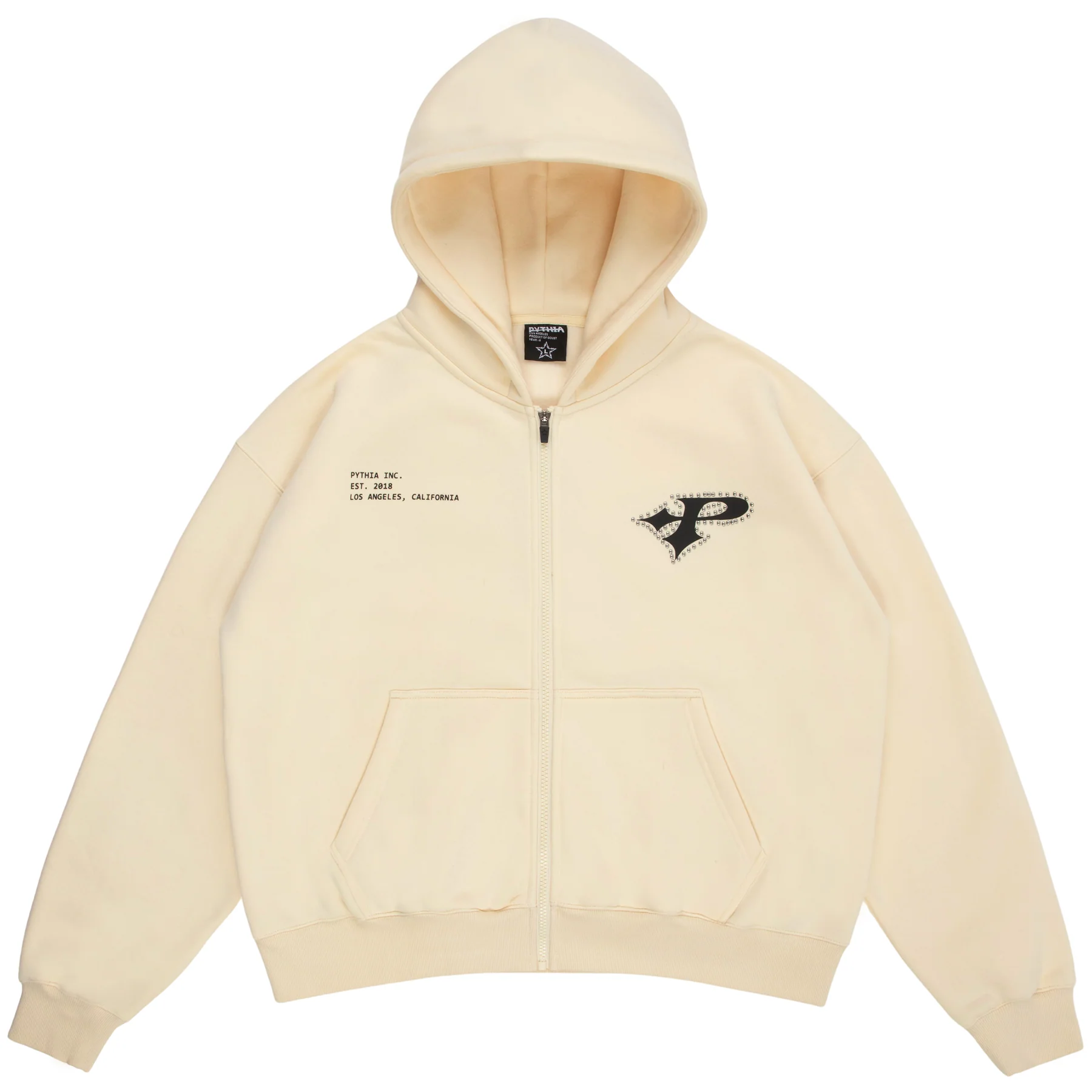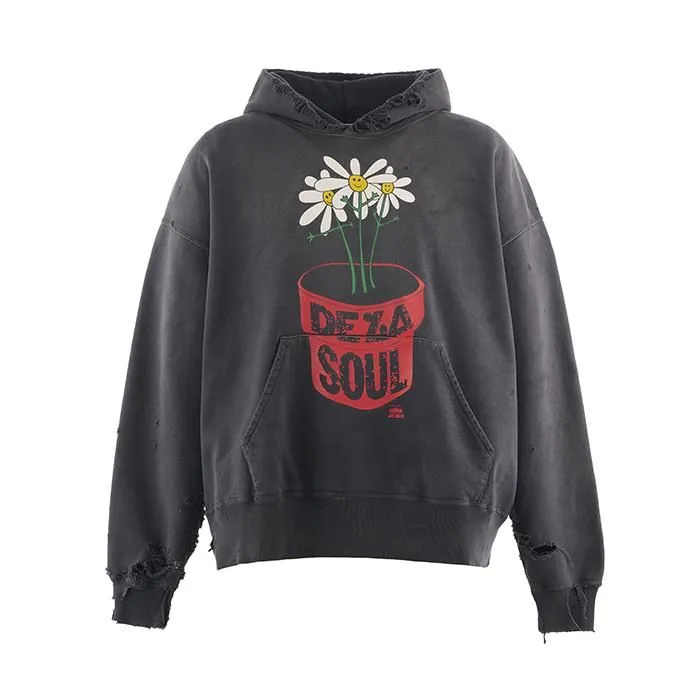For Skelton, fabric has always functioned as more than just medium—it is the original narrative. He often sources hand-loomed wool from British mills or salvages centuries-old homespun pieces from flea markets, then reconstructs them with the reverence of a historian and the instinct of a poet. In Collection XIX, this relationship takes center stage. The funeral stripe cloth, steeped in symbolism, lent the collection both its tonal austerity and emotional openness. Rather than dictating form, it encouraged play and experimentation.
Other fabrics followed: linen, homespun wool, and hand-dyed cotton, much of it sourced from artisan producers across the UK and Ireland. The texture palette remains tactile, weighty but breathable, grounded in reality. The palette—earthy greens, washed-out ochres, slate greys—feels drawn from landscape, not swatch books. And that’s no accident. “I wanted the collection to breathe,” Skelton notes. “I didn’t want it to be pinned down by story. It had to move.”
The West of Ireland: A Lived-In Landscape
To deepen the instinctive tone of the work, Skelton left London and traveled west—to the rugged shores and sodden fields of Ireland’s Atlantic coast. This choice was more than geographic. It was emotional. His great-grandmother was born in Ireland, and though his collections have often drawn from English and Scottish rural life, Ireland offered a new lens—at once ancestral and unfamiliar. “There’s a melancholic beauty to the west,” he says. “It’s a place where stories live in the land itself.”
Rather than hiring models or planning an editorialized shoot, Skelton took to the streets and hills to street-cast local men—farmers, musicians, publicans, and fishermen, most of whom had never modeled before. This decision resonates deeply within his wider practice. Since his early collections, Skelton has rejected fashion’s obsession with polished sameness in favor of authenticity and individuality. His models are never mannequins but characters—conduits for the garment’s soul.
In the Ireland shoot, this approach found new depth. The garments weren’t worn as costume but as clothing—functional, expressive, alive. A linen tunic becomes a workshirt; a tailored overcoat recalls clerical garb yet moves like a fisherman’s cloak. A hand-stitched smock flutters against wind-rough skin. The clothes shape themselves around the bodies and backstories of the wearers.
A Designer Between Time and Timelessness
Since graduating from Central Saint Martins, John Alexander Skelton has stood apart from the conveyor belt of British menswear. Where peers chase trends or push ironic streetwear, Skelton excavates the past—particularly the lives of Britain’s working classes and rural communities. His work references the 18th and 19th centuries, wartime economies, folkloric rituals, and the under-acknowledged art of mending and handcraft. Yet his garments never feel nostalgic or quaint.
Instead, they live in an uncanny in-between: timeless yet contemporary, worn-in yet forward-thinking. They are made to last, not just physically but emotionally. As the fashion world increasingly nods toward “sustainability,” Skelton has been living it, quietly, all along. His sourcing practices, small-batch production, and rejection of seasonal churn exemplify slow fashion not as a slogan, but as a state of being.
The Rituals We Choose
What makes Collection XIX notable is not its departure from Skelton’s core values, but its embrace of uncertainty. Whereas past collections often invoked specific historical moments—mining strikes, religious pilgrimages, or mythic parables—this one stays abstract, instinctive, almost poetic. It’s less a story told than a mood evoked. And perhaps, in this strange and unstable decade, that’s the more radical choice.
Consider the ritualistic way the garments are made. Skelton still cuts much of the fabric himself. Every stitch has intention. He collaborates with traditional weavers and dyers, and many of his garments are finished using natural dyes or mineral washes. In this collection, that hand-finished quality felt even more pronounced—like a garment remembered rather than designed.
A Turn Toward the Future, Gently
Fashion is in flux. In recent years, especially post-pandemic, the industry has undergone seismic shifts—digitization, decentralization, ethical reckonings, and ecological scrutiny. Amid these waves, Skelton’s steady, analogue approach offers a kind of refuge. But Collection XIX proves he is not stuck in the past. By pulling back on literal storytelling and leaning into improvisation, he opens up space for evolution. There’s a newfound gentleness here. It’s clothing made not just with intellect, but with feeling.
This is not to say Skelton has turned his back on narrative. Rather, he’s letting it emerge from the making itself. In Irish poetry and oral history, there’s a tradition of allowing meaning to unfurl rather than be imposed. Skelton, knowingly or not, aligns himself with that ethos. “Sometimes I don’t know what it’s about until much later,” he admits. “It has to find its own voice.”
The Radicalism of Restraint
In an era dominated by algorithmic maximalism—where virality often determines value—Skelton’s work is a quiet resistance. There are no gimmicks, no corporate tie-ins, no urgent drops. Instead, he offers slowness, materiality, and emotional weight. Collection XIX is not a shout, but a whisper. And that, paradoxically, makes it louder.
Critics and followers of Skelton will no doubt read deep into the symbolic use of mourning cloth, the casting of non-professionals, and the Irish setting. And they should. But part of the beauty of this collection is that it asks nothing of the viewer. It simply exists, sturdy and strange and beautiful, like a stone fence on a misty hill—weathered, grounded, and not going anywhere.
Closing Reflections: Where the Cloth Leads
John Alexander Skelton has always been something of a cloistered mystic in the British fashion sphere—a maker of garments that feel less like products and more like heirlooms. In Collection XIX, he loosens his grip just enough to let chance and memory seep in. The result is a body of work that feels lived-in from the start: soulful, weathered, unhurried.
In choosing to let fabric lead, to cast strangers from a windy coastline, and to resist the safety net of concept-overload, Skelton has crafted something rare: a summer collection that breathes. It’s an ode to land, lineage, and the slow unfolding of meaning—not unlike the best poetry, which doesn’t tell you what to feel, but waits for you to feel it on your own.
No comments yet.









